#Abbey Theatre
Text

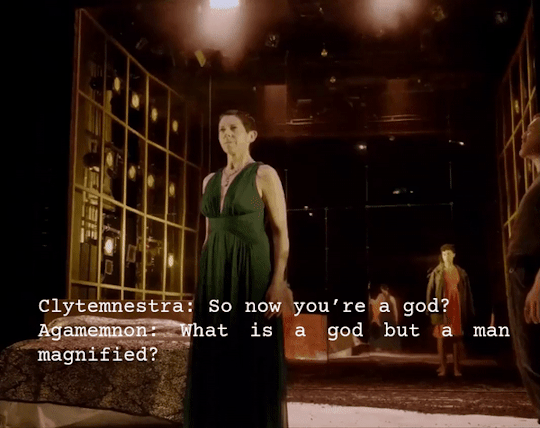


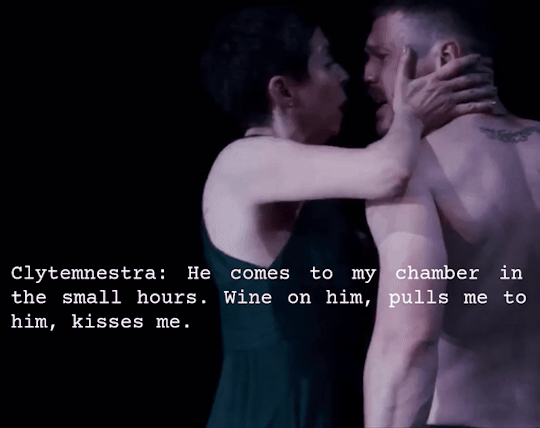
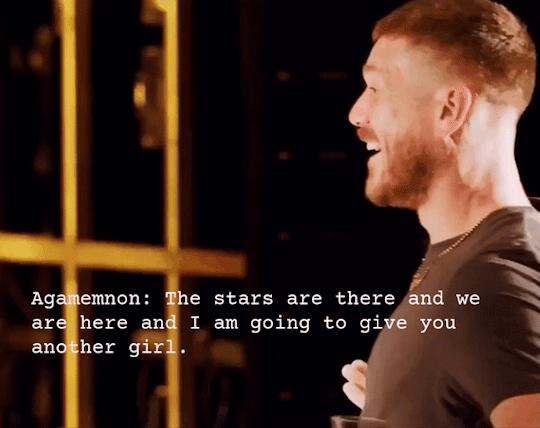
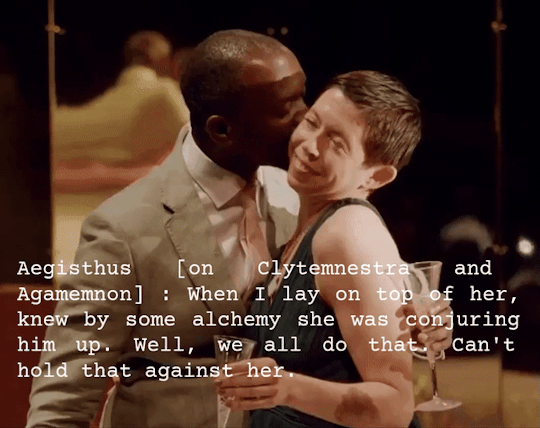




Agamemnon and other characters in Girl on an Altar.
#david walmsley#eileen walsh#daon broni#jim findley#girl on an altar#marina carr#kiln theatre#abbey theatre#theatre#my stuff#my edits#agamemnon
85 notes
·
View notes
Text
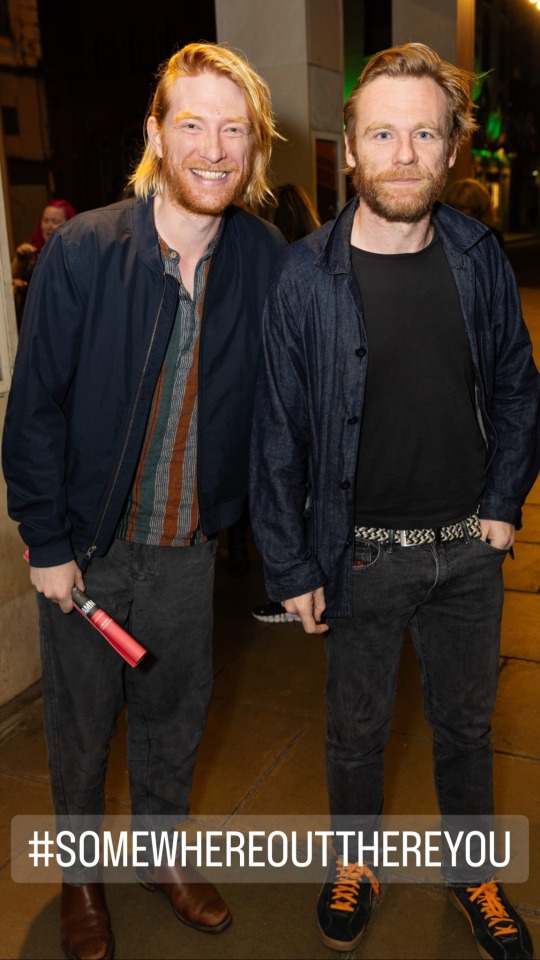
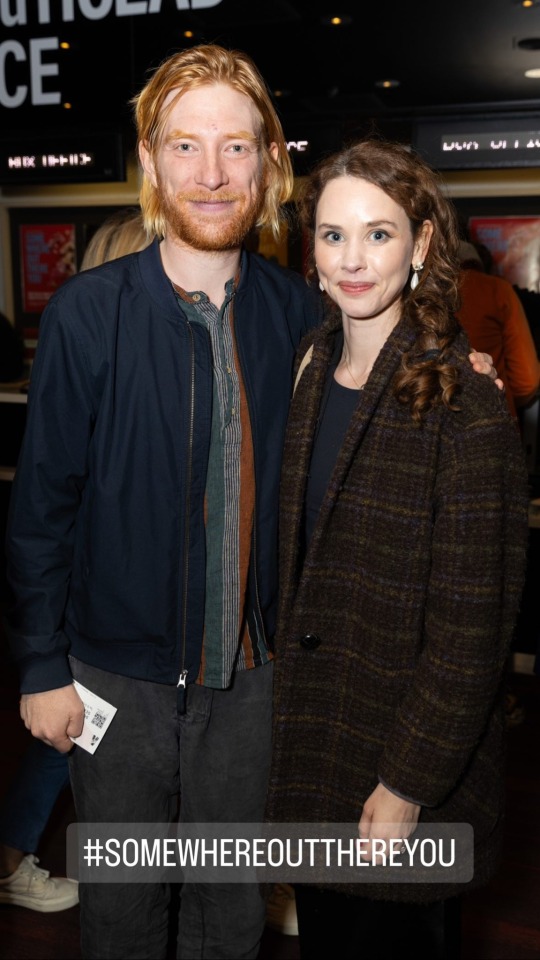
ɴᴇᴡ • Domhnall Gleeson, Brian Gleeson and Juliette Bonass at the premiere of Nancy Harris’s play, 'Somewhere Out There You' directed by Wayne Jordan
📷 Ailbhe O'Donnell (05.10.2023)
#domhnall gleeson#2023#premiere#juliette bonass#brian gleeson#family#theatre#somewhere out there you#abbey theatre#dublin#ireland
25 notes
·
View notes
Text

🆕 Domhnall with Brian and playwright Nancy Harris at ‘Somewhere out there you’ premiere, Abbey Theatre
#domhnall gleeson#brian gleeson#nancy harris#abbey theatre#dublin#somewhere out there you#dublin theatre festival#new photo#premiere
20 notes
·
View notes
Text
Here are 10 things you should know about Barry Fitzgerald, born 136 years ago today. He was one of Hollywood's favorite Irishmen.
#Barry Fitzgerald#character actors#old movies#classic film#classic movies#classic Hollywood#irish actors#Oscar winners#classic Broadway#Abbey Theatre
8 notes
·
View notes
Text
#OTD in 1926 – Rioting greets the Abbey Theatre performance of Sean O’Casey’s The Plough and the Stars because of what is viewed as anti-Irish sentiment.
When Seán O’Casey took his seat for the fourth night of his new drama The Plough and the Stars he dryly noted that two plays were actually taking place: ‘One on the stage and one in the auditorium.’
The Plough and the Stars was first performed at the Abbey Theatre in 1926, less than ten years after the Easter Rising of 1916. On the night of the fourth performance, the Abbey Company was met by an…

View On WordPress
#1916 Easter Rising#Abbey Theatre#Dublin#Ireland#Irish History#Plawright#Play#Sean O’Casey#The Plough and the Stars#W.B. Yeats
7 notes
·
View notes
Text

From Charlene's Instagram
8 notes
·
View notes
Text
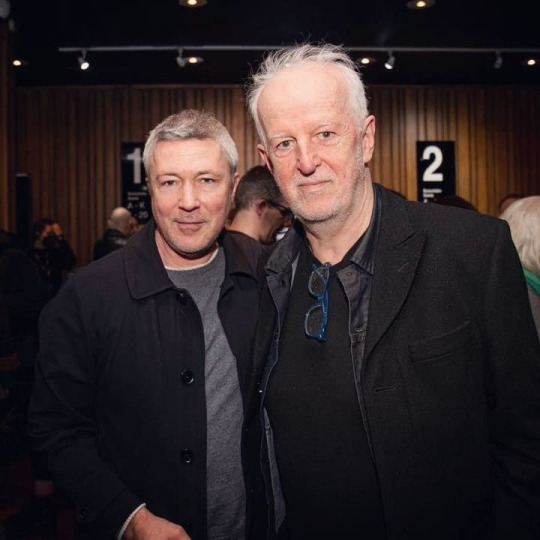
Newish pic apparently from early February at Abbey Theatre at the opening of Tales from the Holywell
Pic comes from imagery.by.ro on Instagram.
15 notes
·
View notes
Text
Brendan Coyle interview for The Weir at The Abbey Theatre 🎭
10 notes
·
View notes
Text
'Andrew Scott was born in Dublin in 1977 and grew up in the suburb of Churchtown. He studied in the private Jesuit-run school, Gonzaga, and went on to study drama in Trinity, but left before graduating to take a job with the Abbey Theatre.
His acting career started early with roles in ads, most famously as the jogging kid in the ad for Flahavan's porridge.
His first film role came in 1996 in the film Korea and that was followed quickly by roles in Saving Private Ryan and Nora and later by Steven Spielberg's Band of Brothers and the BBC drama The Hour.
His career is defined by variety and he keeps fans guessing by switching between film and television and theatre. Scott was most recently seen on Irish screens in John Butler's film The Stag and his next role will be as the priest, Father Seamus, in director Ken Loach's Cannes Film Festival entry Jimmy's Hall.
It will tell the story of the Irish political activist Jimmy Gralton, who was deported from Ireland in the 1930s by Éamon de Valera for alleged communist activity.
Scott currently lives in London.'
#Andrew Scott#The Stag#John Butler#Father Seamus#Ken Loach#Jimmy's Hall#Jimmy Gralton#Saving Private Ryan#Nora#Band of Brothers#The Hour#Steven Spielberg#Korea#Flahavan's porridge#Gonzaga#Dublin#Churchtown#Cannes Film Festival#Abbey Theatre
0 notes
Text
Literary References: Abbey Theatre
The Following is the first entry in ‘Dictionary of Literary Terms and Literary Theory’ (Penguin Reference). I thought I’d add entries here to force myself to study them, and hopefully to share them with whoever may be interested.
I find the format of this particular entry confusing, but I’m not quite sure how to better share it.
Entry:
‘Abbey TheatreThe most famous of Irish theatres and one of the most famous in the British Isles, if not in Europe. It was the centre of the Irish dramatic movement founded in 1899 by W.B. Yeats and Lady Gregory. The aim of the movement was to present Irish plays on Irish subjects performed by Irish actors. The building itself was the result of a conversion of the old theatre of the Mechanics’ Institute in Abbey Street and the old city morgue next to it. Its creation was made possible through the munifcence (and tea) of Annie Horniman (1860-1937), who was later the pioneer of the Manchester School (q.v..). It was opened in 1904 and in the Irish dramatists of any note. Apart from Annie Horniman, the main moving spirits of the Abbey were W.B. Yeats, J.M. Synge and Lady Gregory, plus the Fay brothers. The first plays presented were On Baile’s Strand and Cathleen ni Houliban by Yets and Spreading the News by Lady Gregory. Later came Synge’s The Playboy of the Western World (1907), which caused riots because Irish morality was offended by a reference in the text to a woman’s shift (i.e. a chemise). The fortunes of the theatre declined somewhat with the removal of Annie Horniman’s financial support. Synge died in 1909 and Yeats resigned as a result of a dispute with Lady Gregory, who was to continue until she retired in 1928. Among distinguished Irish playwrights to have their plays produced at the Abbey in its earlier years were Padraic Colum (1881-1972), St John Greer Ervine (1883-197) and Lennox Robinson (1886-1958), who was manager of the Abbey from 1910 to 1923 (apart from a short break), in which year he became director. After the First World War there were more financial troubles, which were partly relieved by three famous plays by Sean O’Casey (1880-1964): namely, Shadow of a Gunman (1923), Juno and the Paycock (1924) and The Plough and the Stars (1926). In 1925 the Abbey received a government grant and became the first state-subsidized theatre in the English-speaking world. After O’Casey’s departure for England (the Abbey rejected The Silver Tassie in 1928 and O’Casey was deeply offended) the theatre was sustained by a number of fine plays by George Shiels (1886-1949). There was also emphasis on plays in Gaelic. The theatre burned down in 1951; a new one opened in 1966.’
Despite how incredibly information-dense this excerpt was, I found it quite interesting as a foreigner living in Ireland. I love theatre and found plenty of plays to read in this entry now have some background on well-known names in Irish history like Yeats and Lady Gregory, so that's enjoyable. However, I had not heard of the Abbey Theatre before this, and the book does not give examples of literary references to it so I am not sure how this will improve my understanding of future texts, but I guess only time will tell.
#book#books#literature#reference#penguin books#penguin classics#abbey theatre#irish theatre#irish literature#irish history#history
0 notes
Text
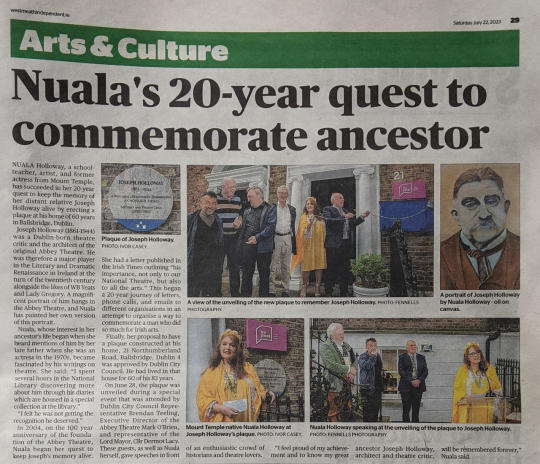

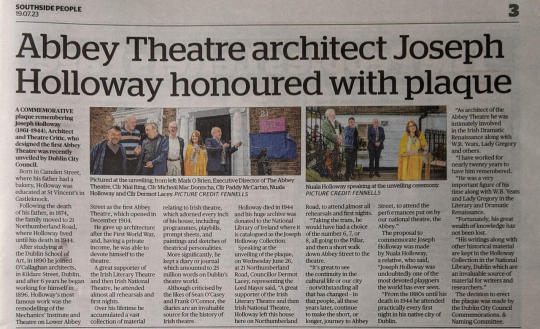
Coverage in The Sunday Independent, The Southside People and The Westmeath Independent from the 28 June 2023 unveiling of the commemorative plaque to Joseph Holloway, architect of the original Abbey Theatre and theatre critic. After almost 20 years finding ways to have Joseph Holloway remembered Dublin City Council responded and approved Nuala Holloway's idea to have a plaque to him constructed at the home he lived in for 60 of his 83 years.
www.nualaholloway.com
0 notes
Text


Girl on an Altar strikes back in the Abbey Theatre this month!
#Slightly different cast but most cast from last year return#Eileen walsh#David Walmsley#Girl on an altar#Theatre#Daon broni#Jim findley#Abbey theatre#The terror cast#The terror actors
53 notes
·
View notes
Text
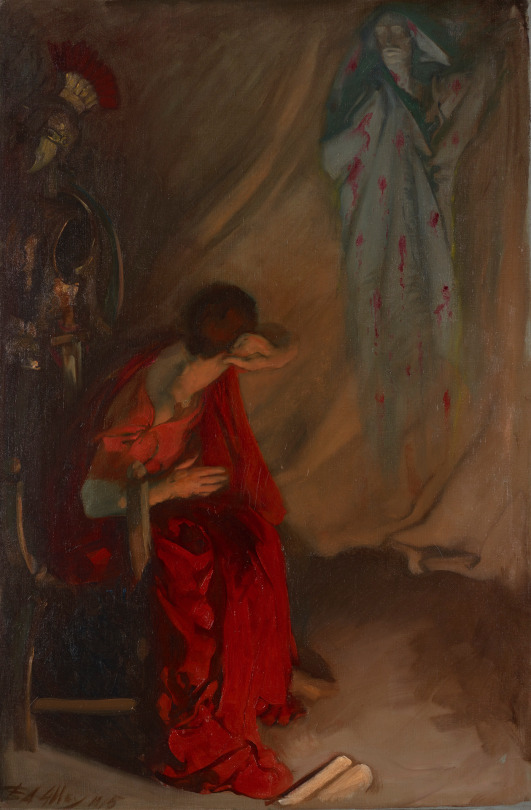
Within the Tent of Brutus: Enter the Ghost of Caesar, Julius Caesar, Act IV, Scene III
by Edwin Austin Abbey
#edwin austin abbey#art#brutus#caesar#ghost#ghosts#julius caesar#ancient rome#roman republic#roman#romans#antiquity#history#europe#european#shakespeare#william shakespeare#theatre#rome
167 notes
·
View notes
Text
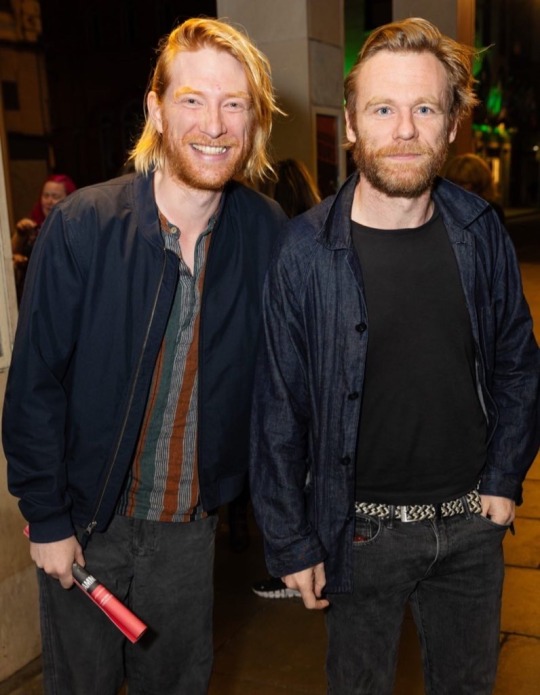
Domhnall and Brian at “Somewhere out there you” premiere at Abbey Theatre in Dublin.
Source Abbey Theatre on IG
15 notes
·
View notes
Text
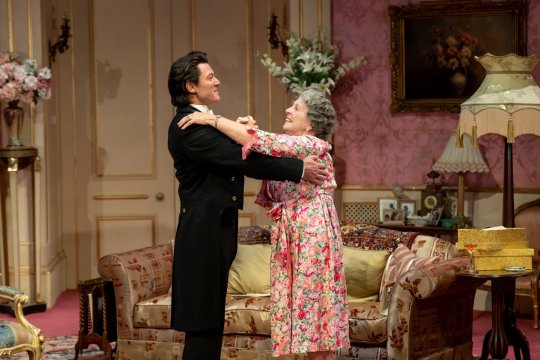


Penelope Wilton & Luke Evans in "Backstairs Billy" (The Duke of York Theatre,2023)
30 notes
·
View notes
Text
#OTD in 1866 – Birth of Irish revolutionary and patriot, Maud Gonne MacBride, near Farnham, Surrey, England.
Maud Gonne was an Irish revolutionary, suffragette, actress and a romantic muse for William Butler Yeats, as well as the mother to Nobel Peace Prize-winner, Sean MacBride.
Maud Gonne was born near Farnham, Surrey, England. She founded the Irish Nationalist group, Inghinidhe na hÉireann (The Daughters of Ireland). She had a relationship with poet, William Butler Yeats and was the inspiration for…

View On WordPress
#A Servant of the Queen#Abbey Theatre#Cathleen ni Houlihan#Dublin#England#Farnham#Glasnevin Cemetery#Inghinidhe na hEireann#Irish revolutionary#Iseult#John MacBride#Major John MacBride#Maude Gonne MacBride#Sean MacBride#The Daughters of Ireland#William Butler Yeats
7 notes
·
View notes